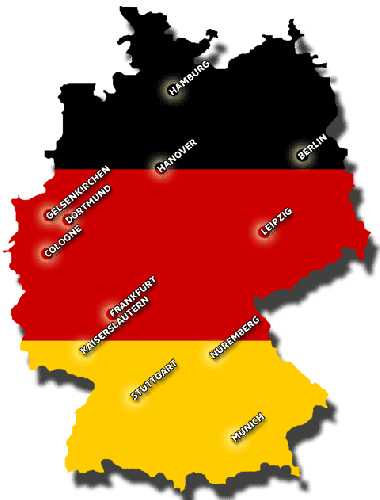German is used as the official language of Germany and of Austria. Historically, German falls into three main periods: Old German (c. 750—c. 1050); Middle German (c.1050—c.1500); and Modern German (c.1500 to the present). The earliest existing records in German date back to about 750. In this first period, local dialects were used in writing, and there was no standard language. In the middle period a relatively uniform written language developed in government after the various chancelleries of the Holy Roman Empire began, in the 14th cent., to use a combination of certain dialects of Middle High German in place of the Latin that until then had dominated official writings.
The Middle Saxon language is an ancestor of the modern Low Saxon. It was spoken from about 1100 to 1500, splitting into West Low Saxon and East Low Saxon. The neighbour languages within the dialect continuum of the West Germanic languages were Middle Dutch in the West and Middle High German in the South, later substituted by Early New High German.
During the 18th cent. a number of outstanding writers gave modern standard German essentially the form it has today. It is now the language of church and state, education and literature. A corresponding norm for spoken High German, influenced by the written standard, is used in education, the theater, and broadcasting. German dialects that differ substantially from standard German, not only in pronunciation but also in grammar, are found in regions of Germany, E France, Switzerland, and Liechtenstein; Lëtzeburgesch, an official language of Luxembourg, is a German dialect spoken by about 400,000 people there.
In 1880, grammatical and orthographic rules first appeared in the Duden Handbook. In 1901, this was declared the standard definition of the German language. Standard German orthography subsequently went essentially unrevised until 1998, when the German spelling reform of 1996 was officially promulgated by governmental representatives of Germany, Austria, Liechtenstein, and Switzerland. Since the reform, German spelling has been in an eight-year transitional period where the reformed spelling is taught in most schools, while traditional and reformed spelling co-exist in the media.








 رد مع اقتباس
رد مع اقتباس